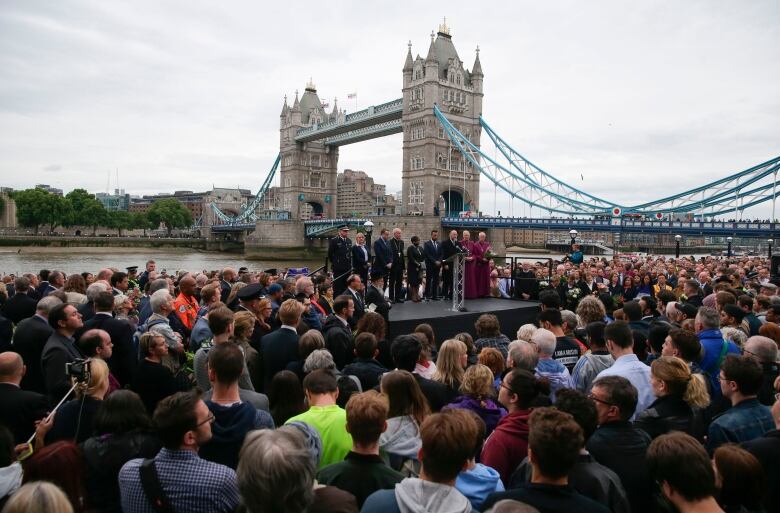How can Canada prevent 'soft target' terror attacks?
Determined attackers will find vulnerabilities, but experts say counter-radicalization is key

Community outreach and enhanced intelligence are key to stopping jihadi-inspired attacks on soft-target civilian spaces, experts say.
This weekend's attack in the U.K. capital, where perpetrators drove a van into a pedestrian crowd on London Bridge before waging a deadly stabbing spree, is the latest one carried out with ease in a public space.
The casualty count may be lower than in a large-scale, highly orchestrated attack using aircraft or big bombs, but attacks like this create maximum fear for much less effort.
Phil Gurski, CEO of Borealis Threat and Risk Consulting and a former strategic analyst for CSIS, said these tactics are used because "any idiot" can pull them off. But he cautioned that it would be a mistake to see the apparent rise in these incidents as a trend or a shift; instead, he sees soft-target attacks as just one more method in addition to large-scale attacks still being planned.
- Canada keeps terror threat level unchanged
- London attack victim from B.C.
- Trudeau condemns 'senseless' attack
Gurski said the best way to stop attacks is strong intelligence, surveillance and public vigilance, and he believes Canada has a relatively solid framework in place.
"I think Canadians should feel confident that we have the people in place, they know how to do investigations, they know how to get federal warrants and they know how to disrupt plots," he said.
Limits to prevention
While physical barriers and infrastructure design can help deter some plots, most determined attackers will simply find another spot or a workaround, he said.
"You can only do so much. What we do is very effective, but unless you want to live in a society where you have to pretty well ask for permission before you breathe, you need to acknowledge a very determined person gets away with it no matter what you do," he said.

Canadian Christine Archibald was among seven people killed when three people in a van mowed down pedestrians on London Bridge and stabbed bystanders with knives in nearby Borough Market on Saturday. Of the 48 injured, 21 were left in critical condition.
The federal Liberal government is spending $35 million over five years to establish a counter-radicalization office in Canada. The centre, which is expected to be formally launched with a special adviser in the coming months, will lead efforts to increase research, co-ordinate expertise and mobilize community outreach.
Scott Bardsley, spokesperson for Public Safety Minister Ralph Goodale, said the goal is to make Canada a world leader in countering radicalization, while also working to disrupt imminent threats to national security.
"While we do not comment on specific threats or operations related to national security, we can say that Canadian national security and law enforcement partners monitor all potential threats and have robust measures in place to address them," he told CBC News in an email.
Community outreach key
Stephanie Carvin, a terrorism expert at Carleton University's Norman Paterson School of International Affairs, said that as ISIS loses power it encourages its followers to perpetrate attacks in any way possible. With an increasingly diverse style of attacks and more rudimentary weapons used, she said, community outreach is the best hope for prevention.
"It sounds like a hippie-dippy solution, but really it's not," she said. "It's a very important counterterrorism policing tool. If you have the community's trust, people do come forward."
She said police officers, teachers and community members must come together to report suspicious behaviour of potentially radicalized persons. Round-the-clock surveillance is costly and challenging, but keeping tabs on when a radicalized individual may be mobilizing to attack is the key to prevention, she said.
